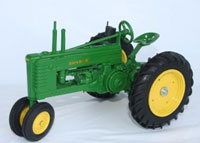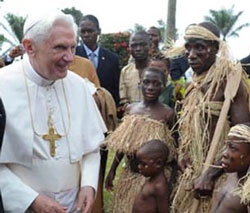 Corn and soybean growers in Ohio and surrounding states should definitely attend an excellent late-February conference to pick up great information that can improve their farm operation.
Corn and soybean growers in Ohio and surrounding states should definitely attend an excellent late-February conference to pick up great information that can improve their farm operation.
The Conservation Tillage and Technology Conference is the largest, most comprehensive program of conservation tillage techniques in the Midwest. About 60 presenters (farmers, industry professionals, and university specialists) from around the country focus on cost-saving, production management topics. The conference is broken down into tracks covering soil and water; nutrient and manure management; advanced scouting techniques; cover crops; crop management; and planters and precision agriculture.
This will be the third year for Corn University and the second year for the Soybean School, both of which cover the latest in corn and soybean management from the top researchers and industry specialists across the Midwest.
“Both programs are a main draw,” said Randall Reeder, an Ohio State University Extension agricultural engineer and an organizer of the conference. “Last year, we had about 300 to 400 in attendance at each program interested in learning the latest in crop production techniques to get the most economic yields with conservation tillage.”
Corn University will take place on Feb. 24 from 11 a.m. until 5:50 p.m. and will feature Peter Thomison, an OSU Extension corn agronomist; Bob Nielsen, a Purdue Extension corn specialist; Fred Below and Laura Overstreet, University of Illinois; and Chad Lee, University of Kentucky.
The theme will focus on achieving 300 bushels per acre using a variety of production management techniques from strip-till to nutrient management to fungicide use. Corn University is supported by Dekalb/Asgrow.
Soybean School will be held on Feb. 25 from 8:30 a.m. until 4:50 p.m. and will feature OSU Extension Specialists; Missouri farmer Kip Cullers, who set the world soybean production record this year of 160.6 bushels per acre; Shaun Casteel of Purdue University; Vince Davis of University of Illinois; and Shawn Conley, University of Wisconsin. Pioneer and Seed Consultants support Soybean School.
Other sessions taking place at the Conservation Tillage and Technology Conference include a daylong session on cover crops on Feb. 24, a daylong session on nutrient management on Feb. 25, and a half-day session on Feb. 25 on soil and water, which will include discussions of phosphorus and nitrogen management related water quality, including algal blooms.
Crop Certified Advisor credits be will offered during the Conservation Tillage and Technology Conference, including coveted nutrient management and soil and water credits.
“CCAs can get all the credits they need in both of these areas in just two days,” said Reeder.
Elwynn Taylor, Iowa State University agricultural climatologist, will be the speaker for the opening general session at 9:30 a.m. on Feb. 24.
The Conservation Tillage and Technology Conference broke an attendance record in 2010 with 966 farmers, crop consultants and industry representatives attending the event. Farmers valued the education they received at $13 per acre, roughly a $7 million value. Crop consultants placed a value on their educational experiences at $16 per acre for the land they influence.
The event will be held Feb. 24-25 at the McIntosh Center of Ohio Northern University in Ada. Sponsors include Ohio State University Extension, the Ohio Agricultural Research and Development Center, Northwest Ohio Soil and Water Conservation Districts, USDA Natural Resources Conservation Service, USDA Farm Service Agency, and the Ohio No-Till Council.
Early registration is $50 for one day or $75 for both days. At the door, registration is $60 for one day and $85 for both days. Complete registration and program information will be available after Jan. 1, 2011 at http://ctc.osu.edu.
 Farm News is hosting its ninth annual agriculture show this week in Fort Dodge, Iowa. Nearly 60 exhibitors from Iowa and surrounding states will showcase their latest state-of-the-art technology in grain and livestock products, ag services, seed varieties and farm toys.
Farm News is hosting its ninth annual agriculture show this week in Fort Dodge, Iowa. Nearly 60 exhibitors from Iowa and surrounding states will showcase their latest state-of-the-art technology in grain and livestock products, ag services, seed varieties and farm toys. 




 Joe Ertl has personally autographed each of the numbered John Deere B 1/16 scale toy tractors for the
Joe Ertl has personally autographed each of the numbered John Deere B 1/16 scale toy tractors for the  I’m just a farmer,
I’m just a farmer,

 This week, as we “give our thanks to God for the fruits of the earth and the work of man,” Pope Benedict XVI recently offered some reflections on agricultural work and feeding the world.
This week, as we “give our thanks to God for the fruits of the earth and the work of man,” Pope Benedict XVI recently offered some reflections on agricultural work and feeding the world.